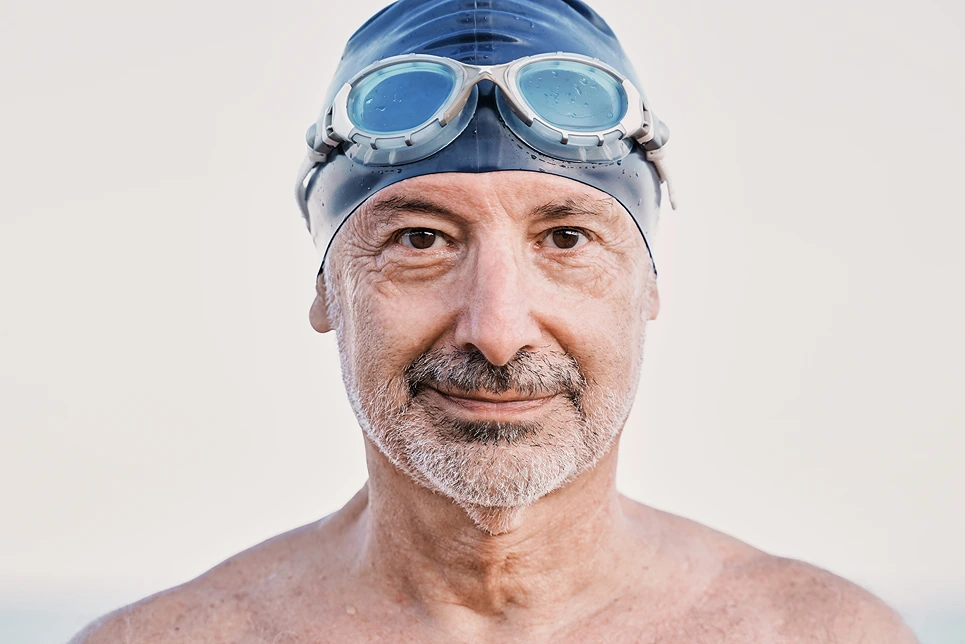

Mohs micrographic surgery is a specialized technique used to treat common types of skin cancer like basal cell carcinoma and squamous cell carcinoma.
The procedure involves removing skin tissue in thin layers and examining each layer under a microscope. This process continues until no cancerous cells remain, ensuring complete removal while preserving as much healthy tissue as possible.
Mohs surgery offers several advantages over other skin cancer treatments:
If you've recently undergone Mohs surgery, you may be wondering when it's safe to resume activities like swimming. Let's dive into the recommended timelines and factors to consider.

So, how soon can you go swimming after Mohs surgery?
The general guideline is to avoid swimming for at least 2-4 weeks following your procedure. This waiting period allows your surgical incision sufficient time to heal properly and reduces the risk of infection.
Here's a typical post-Mohs swimming timeline:
| Post-Mohs Surgery Timeframe | Swimming Guidelines and Healing Status |
| 1-2 weeks after surgery | Stitches or sutures are removed, but the wound is not yet fully healed. |
| 2-4 weeks after surgery | The incision site has closed and healed enough to consider swimming, but consultation with your Mohs surgeon is advised for clearance. |
| 4+ weeks after surgery | Most patients are cleared to swim, though individual healing times may vary based on factors like the size and location of the treated area. |
It's crucial to remember that prematurely exposing your Mohs wound to water can soften and break down healing tissue, disrupting the recovery process. Adhering to the recommended swimming timeline helps ensure your incision heals optimally and minimizes potential complications.
While the 2-4 week swimming guideline applies to most Mohs patients, certain factors can influence your individual timeline:
Mohs wounds in areas with high mobility, like the arms or legs, may require a longer healing period before swimming. Similarly, larger or more complex surgical sites may need extended time to heal fully.
Chlorinated pools and salt water can irritate healing Mohs incisions and increase the risk of infection. Your surgeon may recommend additional precautions or a longer waiting period for these types of water activities.
In some cases, wearing a waterproof bandage or dressing over your surgical site may allow for earlier swimming. However, it's essential to consult your Mohs surgeon before relying on waterproof coverings.
Age, overall health, and pre-existing medical conditions can all play a role in post-Mohs healing and swimming clearance. Be sure to discuss any health concerns with your surgeon.

One of the most critical aspects of determining when you can safely swim after Mohs surgery is maintaining open communication with your Mohs dermatologist. They will provide personalized post-operative care instructions and monitor your healing progress closely.
During follow-up appointments, your surgeon will assess your wound healing and help determine the appropriate time for you to resume swimming and other activities. They can also address any concerns you may have about post-Mohs restrictions and provide guidance on protecting your surgical site while swimming.
It's essential to follow your Mohs surgeon's advice closely and alert them immediately if you experience any signs of infection, delayed healing, or wound reopening.
Attempting to swim too soon against medical recommendations can compromise your skin healing and overall surgical outcome.
Once you've been cleared to swim after Mohs surgery, it's still important to take steps to protect your skin:
Remember, your Mohs treatment site will remain sensitive to sun exposure for an extended period, so prioritizing sun protection is key to maintaining your surgical results and minimizing scar appearance.

Mohs surgery provides precise skin cancer treatment with optimal therapeutic and cosmetic results. As you heal from your procedure, it's natural to wonder when you can resume activities like swimming.
Most Mohs patients should wait at least 2-4 weeks before swimming to allow adequate healing time and reduce the risk of complications. But individual timelines can vary based on factors like the surgical site location, wound size, and overall health.
Your Mohs surgeon is your best resource for personalized guidance on post-operative activity restrictions and determining when it's safe for you to get back in the water. By adhering to their instructions and allowing sufficient healing time, you'll be back to enjoying swimming and other activities before you know it!
If your desired appointment type or preferred provider is unavailable online, kindly call (978) 525-0100 for Peabody, MA and (603) 742-5556 for all New Hampshire locations. Alternatively please feel free to send us your request via the patient portal, or via email at info@dermskinhealth.com
*For medical dermatology appointments in MA please dial (978) 525-0100 or fill out the appointment request form above.